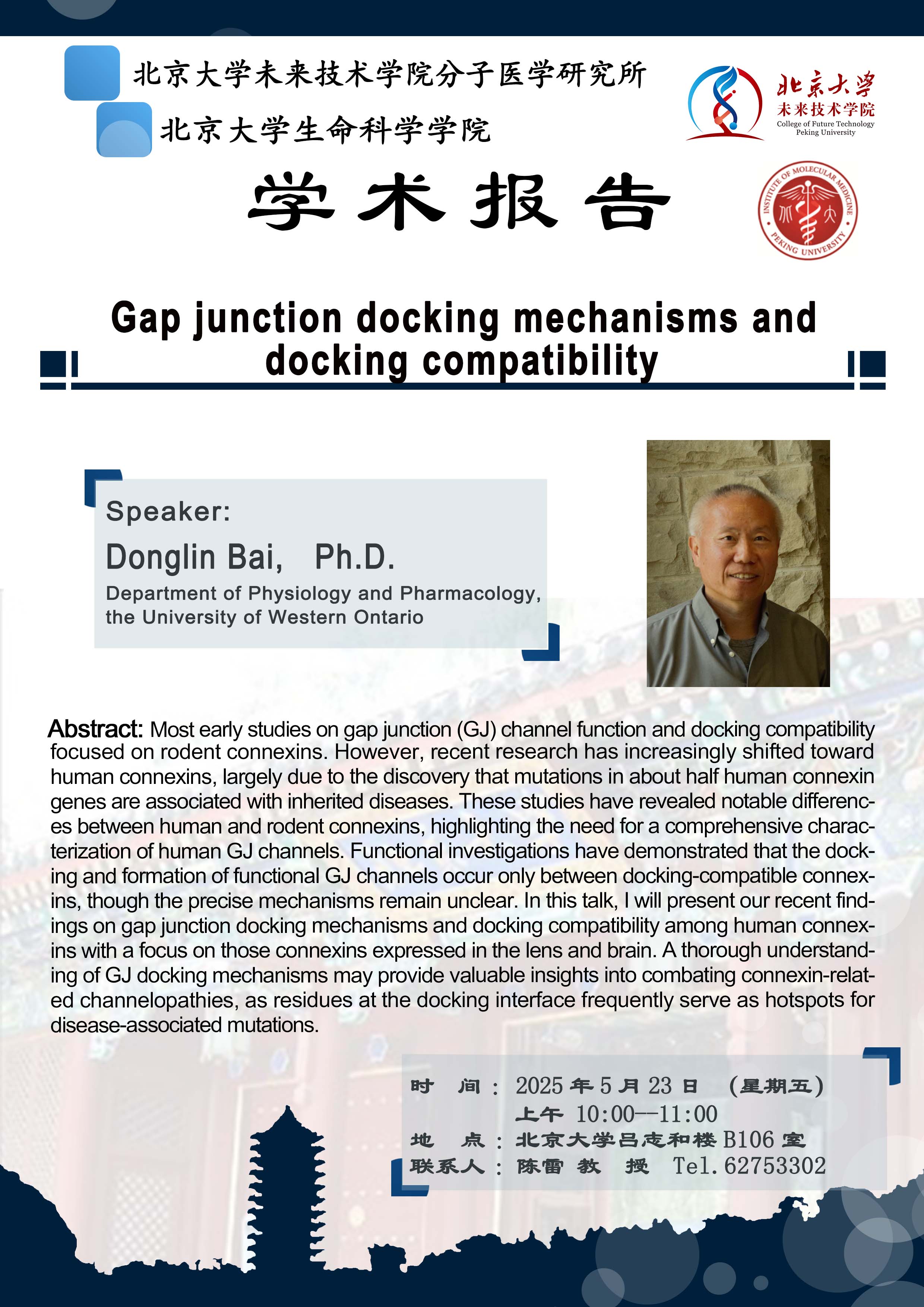Speaker: Donglin Bai, Ph.D, Department of Physiology and Pharmacology, the University of Western Ontario
Time: 10:00-11:00 a.m., May 23, 2025, GMT+8
Venue: Room B106, Lui Che-woo Building, PKU
Abstract:
Most early studies on gap junction (G」) channel function and docking compatibility focused on rodent connexins. However, recent research has increasingly shifted toward human connexins, largely due to the discovery that mutations in about half human connexin genes are associated with inherited diseases. These studies have revealed notable differences between human and rodent connexins, highlighting the need for a comprehensive characterization of human Gu channels. Functional investigations have demonstrated that the docking and formation of functional G channels occur only between docking-compatible connexins, though the precise mechanisms remain unclear. In this talk, l will present our recent findings on gap junction docking mechanisms and docking compatibility among human connexins with a focus on those connexins expressed in the lens and brain. A thorough understanding of GJ docking mechanisms may provide valuable insights into combating connexin-related channelopathies, as residues at the docking interface frequently serve as hotspots for disease-associated mutations.
Source: School of Life Sciences, PKU
